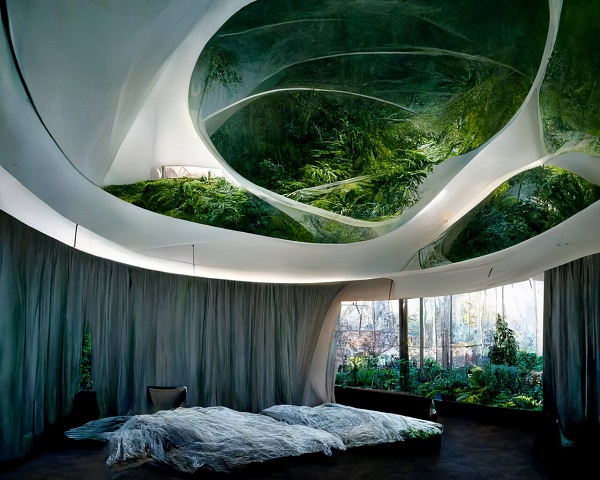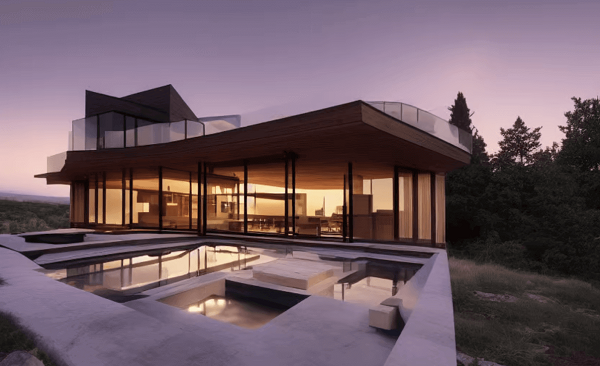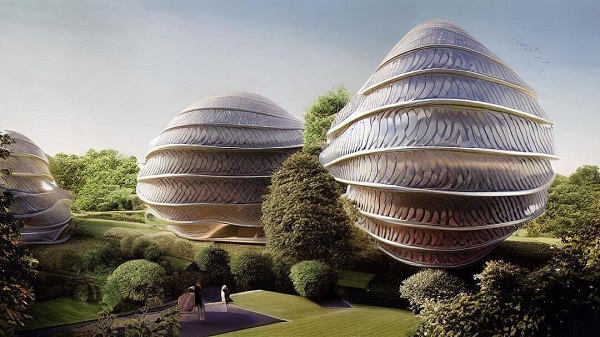ISABEL RUBIO ARROYO | Tungsteno
Artificial intelligence can now design buildings. While there are websites that use this technology to generate images inspired by modern architectural projects, some tools promise to reduce the time needed to design buildings from months to minutes. Others, such as Midjourney and DALL·E 2, use a huge database to create realistic images of all kinds of buildings from text prompts. We look at the potential of these technologies and the extent to which they can influence the work and decision-making of architects.
From winning an art competition to designing buildings like Zaha Hadid
Midjourney rose to fame and generated some controversy a few months ago after a work created with it won an art competition at the Colorado State Fair. Midjourney CEO David Holz explains that the tool aims to "expand the imaginative powers of the human species." "The goal is to make humans more imaginative, not make imaginative machines, which I think is an important distinction," he told Forbes. So far, he says, most of the images created on Midjourney have not been used professionally.
But some architects are already experimenting with these tools. William Garner has explored the potential of Midjourney and DALL·E 2, separately and together, to create everything from a circular bedroom with a futuristic seaweed roof in the style of architect Zaha Hadid to a traditional mud house with lush vegetation and soothing light.
Trained on millions of pieces of open content published on the internet, Midjourney "frees designers to be far more focused on creativity." DALL·E 2 particularly excels at its ability to make precise and realistic edits, as Garner points out: "We can alter certain portions of the image and give it new instructions." This can be useful, for instance, when it comes to painting designs or changing the materials used in a structure.

Midjourney can generate, for example, a circular bedroom with a futuristic seaweed ceiling in the style of Zaha Hadid. Credit: William Garner
Modern architecture in seconds
In addition to Midjourney and DALL·E 2, there are other platforms such as This House Does Not Exist, which allow users to generate images of modern architectural houses at the click of a mouse. They can just as easily generate "a house with a glass and exposed wood exterior, designed to enjoy the sunset with a hot outdoor Jacuzzi" as "a modern, sustainable house in Phuket, Thailand, made of wood, stone and bamboo."
Kory Bieg, program director for architecture at The University of Texas at Austin, believes that such tools will be "a complete game changer, not only for architecture but for every creative discipline." "For the first time, we have a high-level design technology that both experts and non-experts have immediate and equal access to," he tells The Architect's Newspaper.

The platform This House Does Not Exist generates images of modern houses. Credit: @levelsio
The challenge of designing three-dimensional buildings
Artificial intelligence, says Bieg, is surprisingly good at composition and cross-referencing a complex web of architectural histories, styles and contexts, "things that even experts in our field often lose sight of." Still, there are many sceptics. Some say that artificial intelligence generates "just an image". "When will it draw sections?" they ask.
It requires a lot of work to go from a two-dimensional image to a fully three-dimensional building, as Bieg points out. In fact, there are also some specialised tools for this. Nevertheless, the expert insists that, for the time being, these images are only sketches. "What is more stereotypical than an architect drawing on napkins at the first client meeting? So what if our napkin sketch is now a highly detailed, realistic representation of a completely formed building proposal?" he questions.
Midjourney currently generates images that are like sketches. Credit: Architecture for Thought / Stephen Coorlas
Because the capabilities of such tools are currently limited, some experts, such as Garner, advocate combining several different artificial intelligences with traditional workflows. For him, as these tools expand, "it will be fascinating to see how they interact and how fresh approaches to creative exploration take shape." In the same vein, Bieg says: "We are still experts, and our expertise holds value, even in the face of AI. We shouldn't hope for an AI to solve everything or be scared of it; we should be excited for the opportunities and creative tangents it will provide along the way."
· — —
Tungsteno is a journalism laboratory to scan the essence of innovation.
